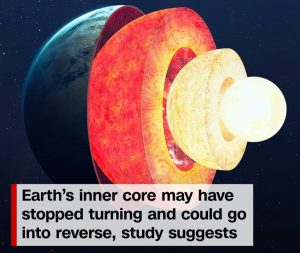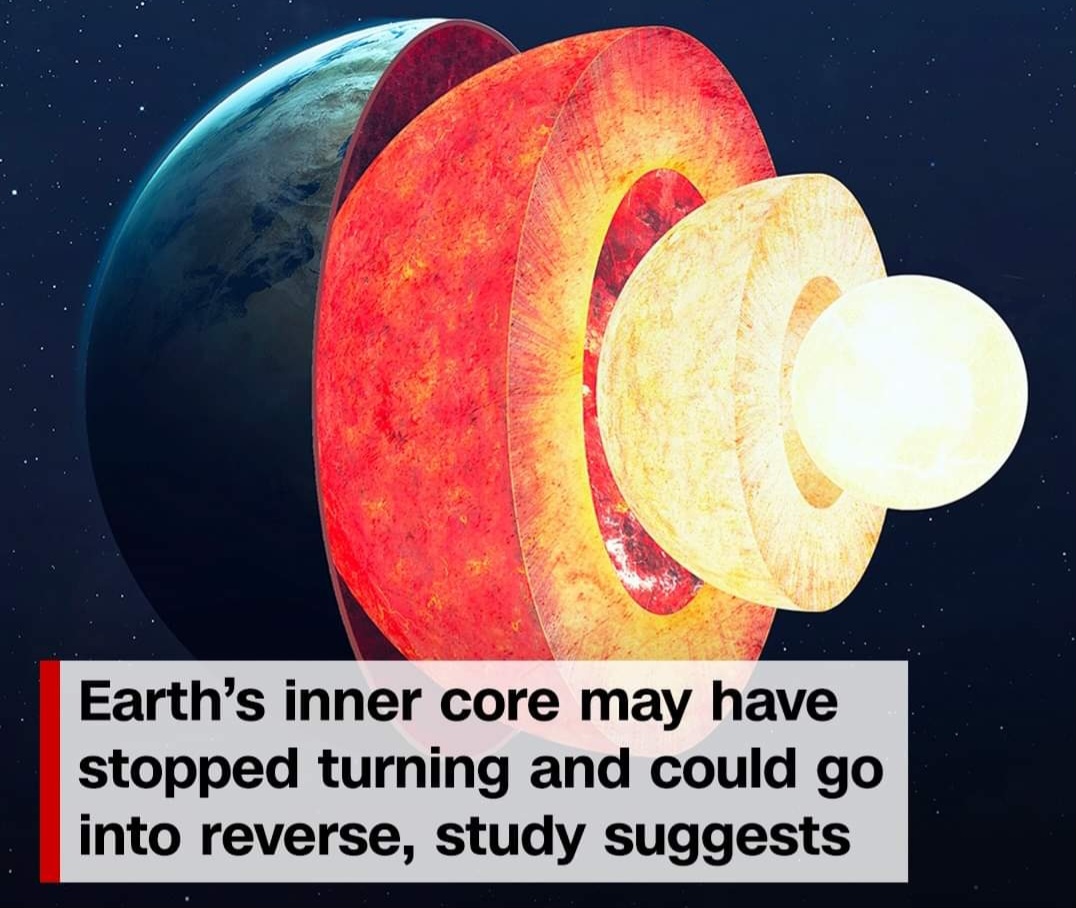You actually want to read this latest scientific discovery and what it portends for human existence
The rotation of Earth’s core may have paused, scientists in China have suggested.
The rotation of Earth’s core may have paused, scientists in China have suggested.
Adobe Stock
The rotation of Earth’s inner core may have paused and it could even go into reverse, new research suggests.
The Earth is formed of the crust, the mantle and the inner and outer cores. The solid inner core is situated about 3,200 miles below the Earth’s crust and is separated from the semi-solid mantle by the liquid outer core, which allows the inner core to rotate at a different speed from the rotation of the Earth itself.
READ ALSO: Ovaries Now Begin Ageing For Women At Late 20s – Study
You Want To Live Long? Get a Second Wife, Study Says
No Amount of Alcohol is Healthy If You Are Younger Than 40 – Study
Caged, Raped And Maimed: Dehumanisation of Sarah Baartman, Black Lady With Large Labia
With a radius of almost 2,200 miles, Earth’s core is about the size of Mars. It consists mostly of iron and nickel, and contains about about one-third of Earth’s mass.
In research published in the journal Nature Geoscience on Monday, Yi Yang, associate research scientist at Peking University, and Xiaodong Song, Peking University chair professor, studied seismic waves from earthquakes that have passed through the Earth’s inner core along similar paths since the 1960s to infer how fast the inner core is spinning.

The “LLR” laser has been installed on the summit of the Säntis (2500m) and was activated from June to September 2021. It was focused above a 124m high transmitter tower belonging to the operator Swisscom, equipped with a traditional lightning conductor.
Car-size laser deflects lightning atop a mountain in Switzerland
What they found was unexpected, they said. Since 2009, seismic records, which previously changed over time, showed little difference. This, they said, suggested that the inner core rotation had paused.
“We show surprising observations that indicate the inner core has nearly ceased its rotation in the recent decade and may be experiencing a turning-back,” they wrote in the study.
“When you look at the decade between 1980 and 1990 you see clear change but when you see 2010 to 2020 you don’t see much change,” added Song.
The spin of the inner core is driven by the magnetic field generated in the outer core and balanced by the gravitational effects of the mantle. Knowing how the inner core rotates could shed light on how these layers interact and other processes deep in the Earth.
However, the speed of this rotation, and whether it varies, is debated, said Hrvoje Tkalcic, a geophysicist at the Australian National University, who was not involved in the study,
“The inner core doesn’t come to a full stop,” he said. The study’s finding, he said, “means that the inner core is now more in sync with the rest of the planet than a decade ago when it was spinning a bit faster.”
“Nothing cataclysmic is happening,” he added.
Based on new evidence from the NASA/ESA/CSA James Webb Space Telescope, this illustration reflects the conclusion that the exoplanet LHS 475 b is rocky and almost precisely the same size as Earth. The planet whips around its star in just two days, far faster than any planet in the Solar System. Researchers will follow up this summer with additional observations with Webb, which they hope will allow them to definitively conclude if the planet has an atmosphere. LHS 475 b is relatively close, 41 light-years away, in the constellation Octans. [Image Description: Illustration of a planet and its star on a black background. The planet is large, in the foreground at the centre, and the star is smaller, in the background and also at the centre. The planet is rocky. The top quarter of the planet (the side facing the star) is lit, while the rest is in shadow. The star is bright yellowish-white, with no clear features.]
James Webb Space Telescope discovers its first exoplanet
Song and Yang argue that, based on their calculations, a small imbalance in the electromagnetic and gravitational forces could slow and even reverse the inner core’s rotation. They believe this is part of a seven-decade cycle, and that the turning point prior to the one they detected in their data around 2009/2010 occurred in the early 1970s.
Tkalcic, who is the author of “The Earth’s Inner Core: Revealed by Observational Seismology,” said the study’s “data analysis is sound.” However, the study’s findings “should be taken cautiously” as “more data and innovative methods are needed to shed light on this interesting problem.”
Song and Yang agreed that more research was needed.
Studying the Earth’s core
Tkalcic, who dedicates an entire chapter of his book to the inner core rotation, suggested the inner core’s cycle is every 20 to 30 years, rather than the 70 proposed in the latest study. He explained why such variations occur and why it was so difficult to understand what happens in the innermost reaches of the planet.
“The objects of our studies are buried thousands of kilometers beneath our feet,” he said.
“We use geophysical inference methods to infer the Earth’s internal properties, and caution must be exercised until multi-disciplinary findings confirm our hypotheses and conceptual frameworks,” he explained
“You can think of seismologists like medical doctors who study the internal organs of patients’ bodies using imperfect or limited equipment. So, despite progress, our image of the inner Earth is still blurry, and we are still in the discovery stage.”
Culled from CNN (a report by Lianne Kolirin, CNN, Updated 12:17 PM EST, Wed January 25, 2023)





